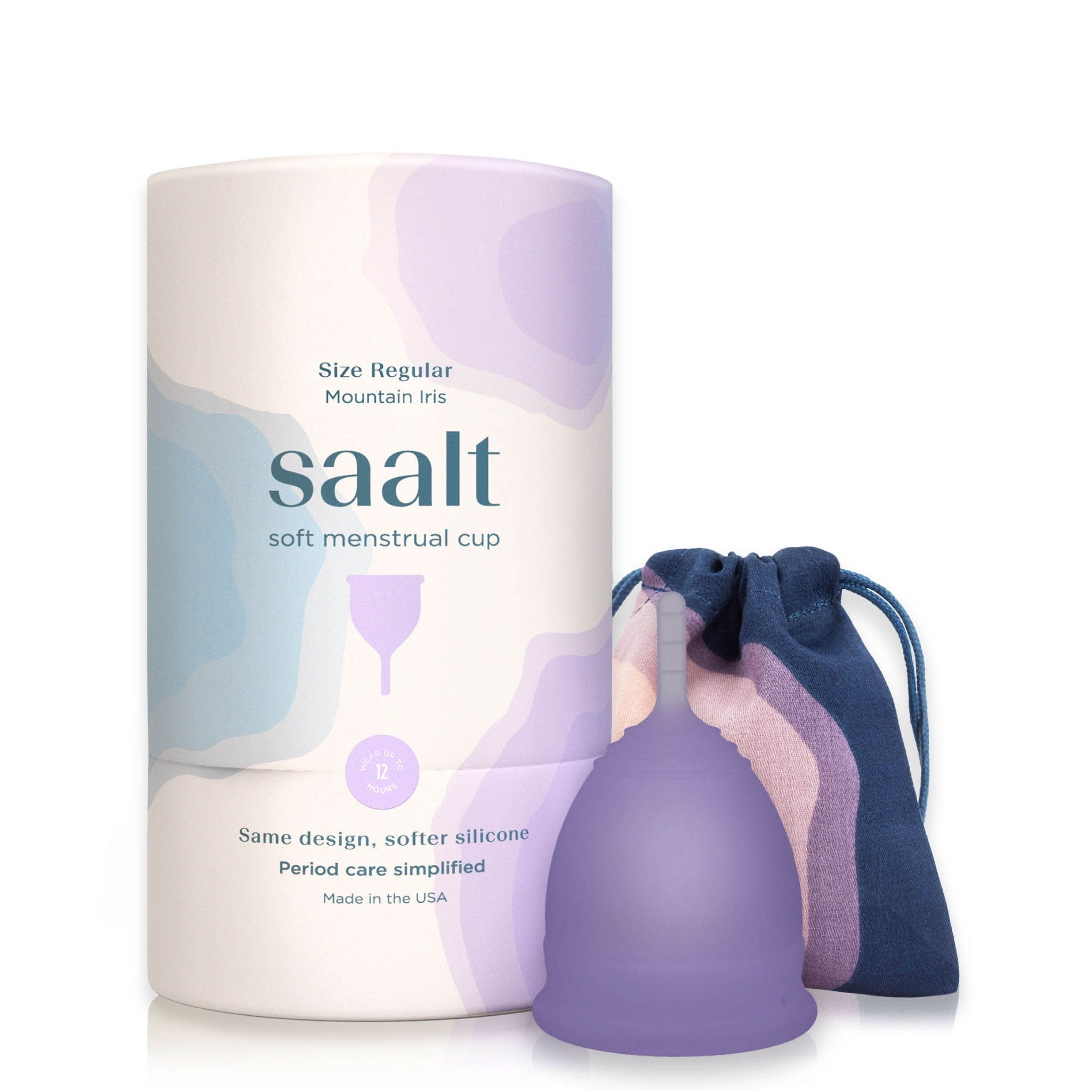When it comes to menstrual cups, there’s a lot of information out there, and not all of it is helpful. You may be curious to try one but hesitant because of some things you’ve heard. Here at Saalt, we’re committed to education and today, we’re sharing the truth behind common menstrual cup myths.
1. Myth: You can’t use a menstrual cup if you’re a virgin or have never inserted a tampon before.
Myth! Even if you don’t have experience with inserting things into your vagina, you can totally use a cup. The Saalt Teen Cup is a great option for teens or folks who know they have a low cervix. We recommend taking things slow while you learn how to insert a menstrual cup (water-based lube is your friend😊). With time and practice the cup will become second nature!
2. Myth: Using a menstrual cup eliminates the risk of Toxic Shock Syndrome (TSS).
Unfortunately, no. This is one of the most important myths we work to bust here at Saalt. While TSS is extremely rare, the truth is that all period products (even ones you don’t wear internally) come with a risk of TSS. There are several factors that contribute to TSS occurring, and you can do your part to prevent it. Check out this blog to learn more about TSS and its causes.
3. Myth: menstrual cups are hard to use... And they’re messy!
Like any new product, menstrual cups can come with a learning curve, but once you find what works best for you using a cup will be a breeze. Using a menstrual cup shouldn’t be messy, but if you have any concerns, it can help to practice in the shower! Many people are blown away by how easy and mess-free cups are, so don’t let that stop you from making the switch. Not to mention, cups allow you to cut down on waste from disposable products, helping keep planet Earth clean as well! If you're nervous about leaks when you first start using a cup, pairing it with period underwear is a great way to get some peace of mind.
4. Myth: You should replace your menstrual cup yearly.
Psych! This is a marketing ploy, however, not all menstrual cups are created the same. The Saalt Cup is made from medical-grade silicone. We’re proud to say that with proper use and care, your Saalt Menstrual Cup or Menstrual Disc can last up to 10 years. They’ve even been tested by a third-party lab to be sure. That’s a savings of nearly $1,500 and diverts an average of 3,000 disposables from oceans and landfills. Cha-ching!
5. Myth: Menstrual cups can cause prolapse.
False. The idea that menstrual cups can cause prolapse has been a hot topic in the cup community the past few years. The good news is that, no, they cannot. However, prolapse is a health condition that doesn’t get much airtime so we’re giving it a stage. We teamed up with pelvic floor therapists to learn more about what can cause prolapse and we’ve even written a blog to explain the risks.
6. Myth: menstrual cup size is based on whether or not you’ve had a baby.
Not necessarily! There are nearly 200 different types of menstrual cups available to consumers and they’re all unique in their own way. Many companies claim that childbirth history is what determines someone’s size but we’ve learned that there’s a lot more to it than that. Everyone’s anatomy is unique, and cup sizing can be more effective when it is based on cervix height, flow, and one’s history with cups. Menstrual cup sizing is not an exact science, but we can normally get pretty close with our recommendations. That’s why we developed the Saalt Cup and Disc Quiz. Our team of Saalt Coaches has spent countless hours testing the quiz results to make sure they match our recommendations.
7. Myth: Your menstrual cup can get lost inside the vagina.
This is another myth we’re happy to bust any day, any time. The vaginal canal can seem like a bit of a mystery. We can’t see what’s up there, so why should we trust that we’ll be able to find our cup when it comes time to remove it? Contrary to our initial fears, the vaginal canal is not an endless tube, but actually has an end point (see diagram for peace of mind). This means that your cup cannot get lost within your body. Phew!

There you have it!
There’s no such thing as TMI here at Saalt. Have any burning questions? Send them our way. Now share this with a friend!👋😊





